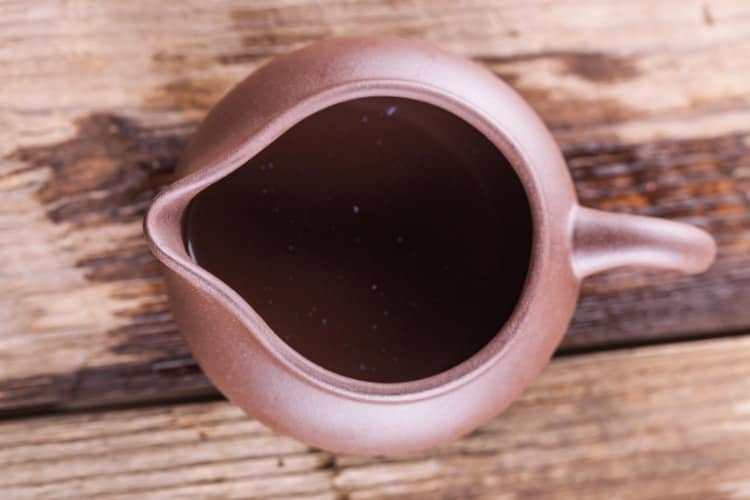
Knowing how to put together your own hormone-balancing tea recipe can be a fun and empowering way of transforming your health.
The key is to start with highly effective and easy-to-find herbs.
And that’s what this post is going to show you.
I’m going to be sharing a tea recipe for hormone balance that I use several times a week. Personally, this blend is particularly helpful during super busy/stressful times when I know my adrenals are working overtime. My favorite thing about it is that it’s incredibly energizing without creating any sort of agitation.
This recipe uses 3 herbs and while you can certainly add other herbs to the mix, this post will focus just on those core herbs.
By the end of this post you’ll know all about:
- The 3 main herbs for a hormone-balancing tea recipe.
- How to make your own tea for hormone support.
- How to use the tea.
Note: this post contains affiliate links and I earn a commission (at no additional cost to you) if you use them to make a purchase.
3 HERBS TO USE IN A HORMONE BALANCING TEA RECIPE (AND THEIR BENEFITS)
1. Red Raspberry Leaf
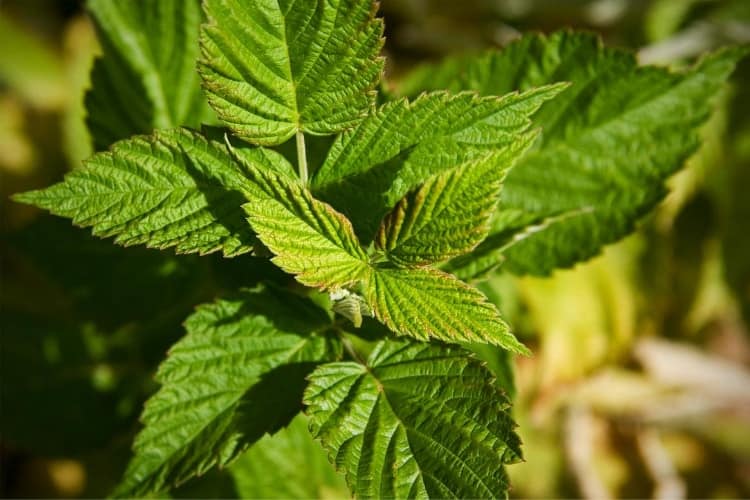
Red raspberry is a classic herb for female health because it has a strong affinity for the reproductive organs.
This herb is mainly known for being a uterine tonic, meaning that it nourishes the uterus. In addition, red raspberry leaf also has the ability to both relax and strengthen uterine muscles (source).
One reason why this matters a lot is that part of the blood supply to the ovaries comes from the uterine arteries (source).
And since nutrients travel through the blood, this means that the nutrients from red raspberry leaf will also benefit the ovaries.
And while we’re on the topic of nutrients, here’s a sample of what red raspberry leaf contains:
- iron
- vitamin C
- B vitamins
- zinc
- phosphorus
- magnesium
- antioxidants
Last but not least, some research also shows that red raspberry leaf is helpful for PMS, cramps and nausea (source).
2. Stinging Nettle Leaf
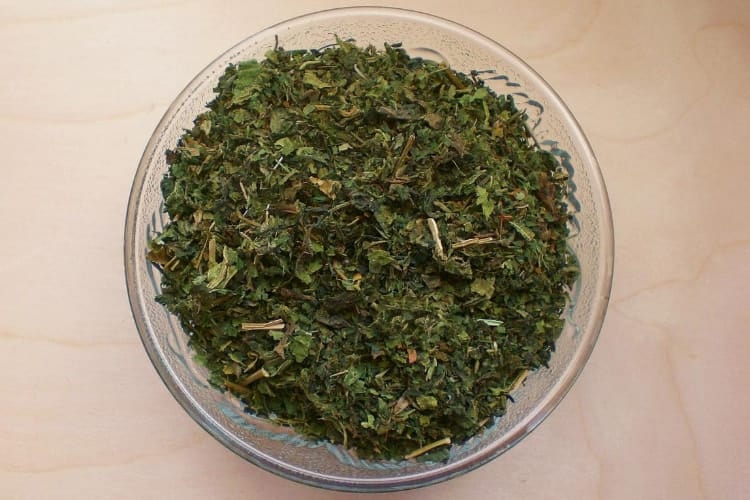
In my (very biased!) opinion, stinging nettle leaf is the queen of hormone-balancing herbs.
I love this herb so much that I have a whole post discussing the benefits of nettle for hormones.
Here are some of the main reasons why nettle is so helpful for hormones:
- It’s rich in iron which is necessary for making TSH (thyroid stimulating hormone). Having enough iron in your diet supports thyroid function and helps regulate the menstrual cycle.
- Regulates blood sugar levels which is especially helpful for PCOS, weight gain, fatigue and other hormonal imbalance symptoms.
- Contains vitamin K, an essential nutrient for blood clotting and for easing heavy menstrual bleeding.
- Supports healthy liver function, which means the liver can more efficiently do things like metabolize estrogen, get rid of toxins and convert thyroid T4 hormone to T3.
- Acts as a natural energizer thanks to the fact that it contains tons of nutrients including vitamins (A, C, K), iron, potassium, proteins and more.
As you can see there’s a ton of goodness that comes from stinging nettle.
And the best part is that it’s a weed, which means it grows like wildfire and is very easy to find. In fact, it’s probably in your backyard!
3. Oatstraw
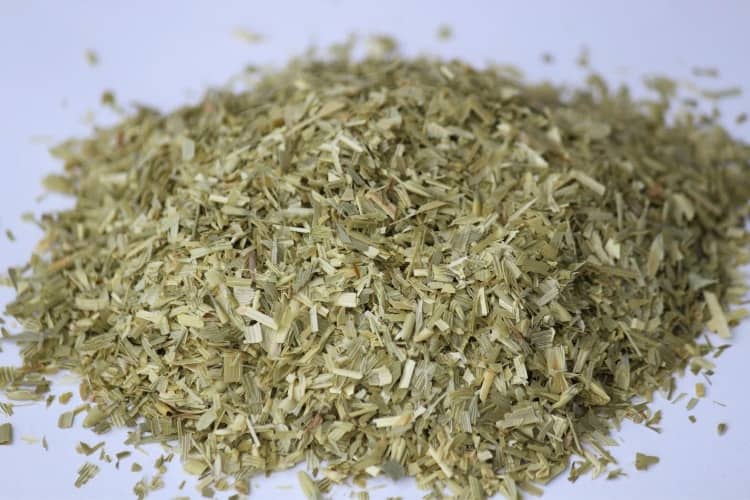
Sometimes referred to as “wild oats,” oatstraw comes from the same plant that gives us oatmeal.
Oatstraw is simply the part of the plant that is left behind after the oat grains are harvested.
Now, when it comes to hormones, oatstraw’s main benefit is that it’s a nervine tonic (source).
In plain English, this means that oatstraw nourishes and supports the nervous system.
And by providing nutrients to the nerves, oatstraw helps you feel more relaxed, less irritable and most of all, you’re better able to adapt to stress.
In fact, oatstraw’s ability to alter our stress response means that it helps the HPA axis (hypothalamic pituitary adrenal axis) function better.
In addition to all of the above, oatstraw is also rich in mucilage, which is a thick substance.
Because of that mucilage, oatstraw is soothing to inflamed tissues. In fact, taking oatstraw orally can help to moisten dry or inflamed vaginal tissue.
Last but not least, oatstraw also has antidepressant properties and helps with wound healing.
HOW TO MAKE YOUR OWN HORMONAL IMBALANCE TEA BLEND
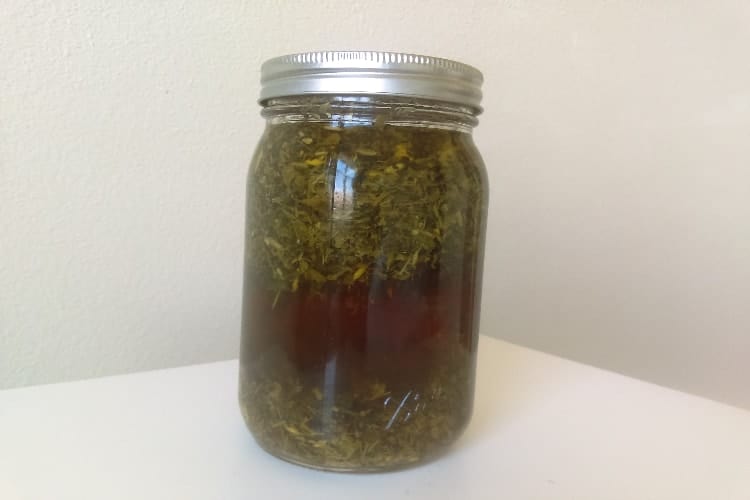
Now it’s time to make your hormone-friendly tea. But before we get into the recipe, there are two things to keep in mind:
- This recipe is an overnight infusion. So, rather than steeping the herbs for just a few minutes, they will steep overnight. This method draws out more nutrients from the herbs, making the tea more potent (and also very dark).
- You will need 1 ounce (by weight) of dried herbs for this recipe. That’s about 1 cup (maybe more) of herbs depending on how fine cut they are.
Given the large quantity of herbs you need, it’s just not practical to attempt this recipe with tea bags. You want loose leaf tea.
As far as where to get your loose leaf tea, your local herb store will likely have it (these three herbs are pretty “mainstream” for herb stores). Or you could also find sellers on Amazon for these herbs.
A better option in my opinion is to get your herbs from Mountain Rose Herbs. They carry a massive selection of very high quality herbs. And with everything being organic, that’s a plus for a tea that is meant to support your hormones.
Ingredients
4 oz dried red raspberry leaf (get it here)
4 oz dried stinging nettle leaf (get it here)
2 oz dried oatstraw (get it here)
1 quart-sized mason jar (get it here)
Instructions
1. Add the herbs to the mason jar.
2. Fill the mason jar with boiled water. The herbs will rise as you pour water into the jar. Stir to make sure all the herbs are saturated with water.
3. Add more water as necessary until the jar is almost full (allow about an inch of space at the top of the jar).
4. Seal the jar.
5. Allow the tea to sit for at least 4 hours or preferably, overnight.
6. Strain the herbs out of the tea. You can use a spoon to press down on the herbs and remove the excess liquid that is trapped in the leaves.
7. Sweeten with raw honey and drink within 72 hours.
TIPS FOR USING AND STORING YOUR HORMONE BALANCE TEA
Here are some basic tips to keep in mind as you use this tea:
- The recipe above is for 1 person.
- You can store the tea in the fridge for up to 3 days. But keep in mind that herbal teas lose their potency the longer they sit around (even in the fridge).
- You can drink the entire quantity from this recipe in one day. However, if that’s not feasible then drink this amount every other day.
- Feel free to switch up the ratios of the herbs in the tea depending on your needs. For example, if you’re feeling particularly drained, irritable or unable to focus, you can use more oatstraw to soothe your nervous system.
- Nettle has a diuretic effect so you might not want to drink this tea very close to bedtime. Otherwise, you might find yourself waking up at night to pee. Personally, I try to be done with the tea by 7pm (or 8pm at the latest).
FAQs ABOUT HORMONE BALANCING TEA RECIPE
What herbs can be used for hormonal imbalance?
Herbs that help with hormone imbalance include red clover, dandelion, chamomile, vitex and many more.
For the full list of herbs that support hormones, check out this post on 6 herbs that balance hormones, as well as this one on the 10 teas for balancing women’s hormones.
Does green tea balance hormones?
Green tea has anti-inflammatory properties that have been shown to help with hormonal imbalances like PCOS. In addition, green tea improves sensitivity to the hormone insulin and can support a liver health (which impacts hormone health).
For more on the benefits of green tea and the types of green tea, read this post on how to use matcha for hormone balance and this one on the best green tea for PCOS.
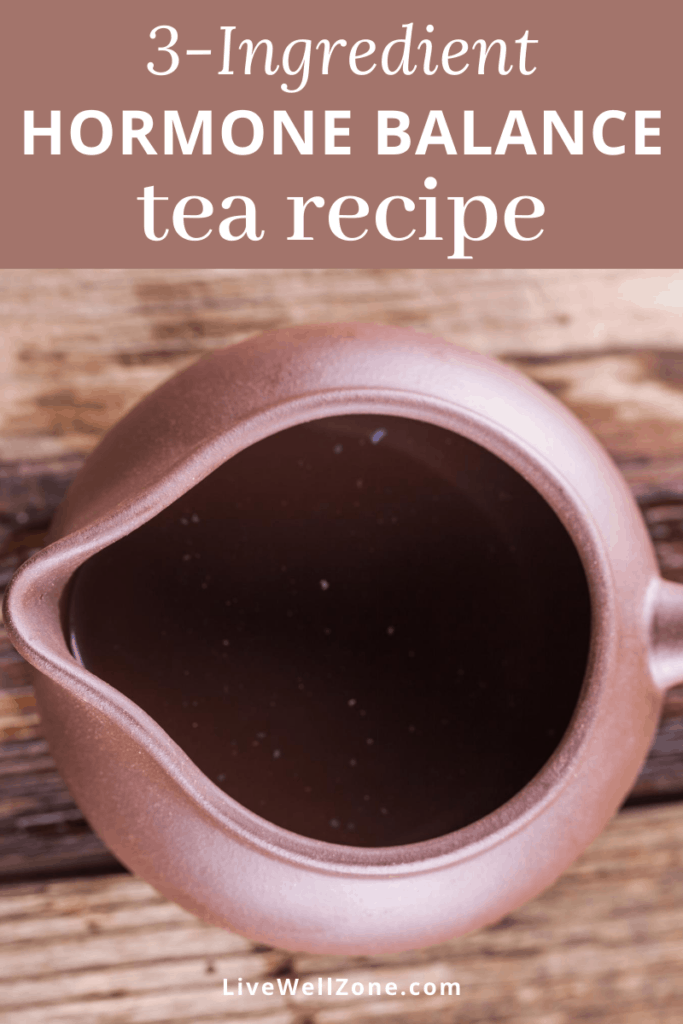
CONCLUSION
With the 3 herbs we’ve covered in this post, you can start boosting your nutrient intake and support your hormones.
Also, remember that you can also do infusions with just one herb at a time. But whether you use one herb or all three, just make sure to always use a total of 1 ounce for a quart-sized mason jar.
I hope this article has inspired you to give this powerful recipe a try!
Related posts:
6 Drinks to Balance Hormones Naturally (+ Recipes)
3 Supplements For Female Hormonal Imbalance (you probably don’t know about)
Hormone Balancing Diet Plan: A Complete Guide To Transform Your Body


